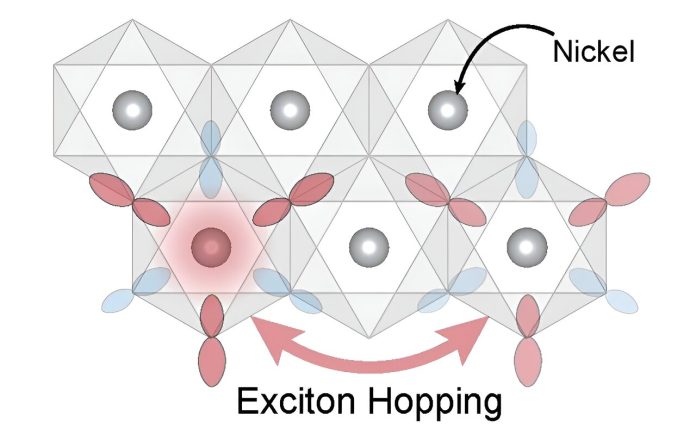
MIT physicists and their colleagues have discovered new insights into special particles that play a crucial role in a unique type of magnetism found in ultrathin materials.
This breakthrough could impact future electronics and more.
They used a powerful tool at the National Synchrotron Light Source II at Brookhaven National Laboratory to make these findings.
The team focused on particles called excitons. Excitons are made up of an electron and a “hole,” which is the space left when an electron jumps out of its position after being hit by light.
Despite being separate, the electron and hole stay connected through electrostatic interactions, forming an exciton.
Unlike electrons, excitons have no charge but do have spin, which can act like a tiny magnet.
The researchers discovered the microscopic origin of excitons in materials called nickel dihalides.
These materials have layers of nickel atoms between layers of halogen atoms (elements like chlorine, bromine, or iodine) and can be made extremely thin. The team found that excitons can be controlled by chemically “tuning” the material, mainly made of nickel.
They also found that excitons move throughout the material rather than staying bound to the nickel atoms.
The team studied how the magnetic properties of these materials respond to light. They wanted to know how excitons form and if they can be controlled.
By using light with specific energies, they were able to create excitons in nickel dihalides.
They found the exact wavelengths of light needed to create excitons in materials with different halogen atoms (chlorine, bromine, or iodine).
Riccardo Comin, an MIT professor and leader of the research, said, “We’ve developed a new research direction into studying these magnetic two-dimensional materials using an advanced spectroscopic method called resonant inelastic X-ray scattering (RIXS).” This method, available at Brookhaven National Lab, was crucial for their discoveries.
The team’s work could help predict new materials with excitons that have special properties. They also found that while excitons originate on the nickel atoms, they can move between different sites throughout the material.
This is the first time such movement has been observed for these types of excitons, providing new insights into their relationship with the material’s magnetic properties.
The researchers used RIXS, a technique with high sensitivity to excitons from nickel atoms. This tool helped them set a general framework for studying nickel dihalide systems and measure the movement of excitons. The RIXS facility at Brookhaven is one of the few places in the world with the advanced instruments needed for this work.
The research team included Connor A. Occhialini, an MIT graduate student, and Yi Tseng, a former MIT postdoc now at Deutsches Elektronen-Synchrotron (DESY), who are co-first authors of the study published in Physical Review X. Other contributors were from Sorbonne University, Arizona State University, Utrecht University, and Brookhaven National Laboratory.
This discovery opens the door to identifying and controlling new materials with unique electronic and magnetic properties.
It also lays the groundwork for potential applications in quantum computing and novel sensors.
The research shows that understanding and manipulating excitons could lead to significant advancements in material science and technology.



